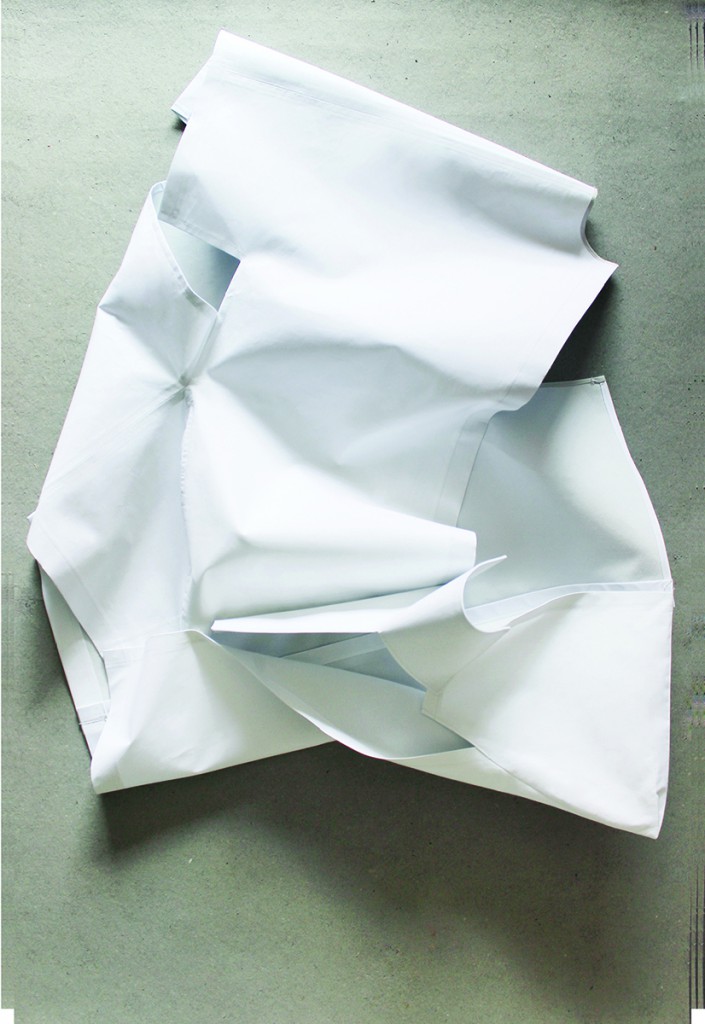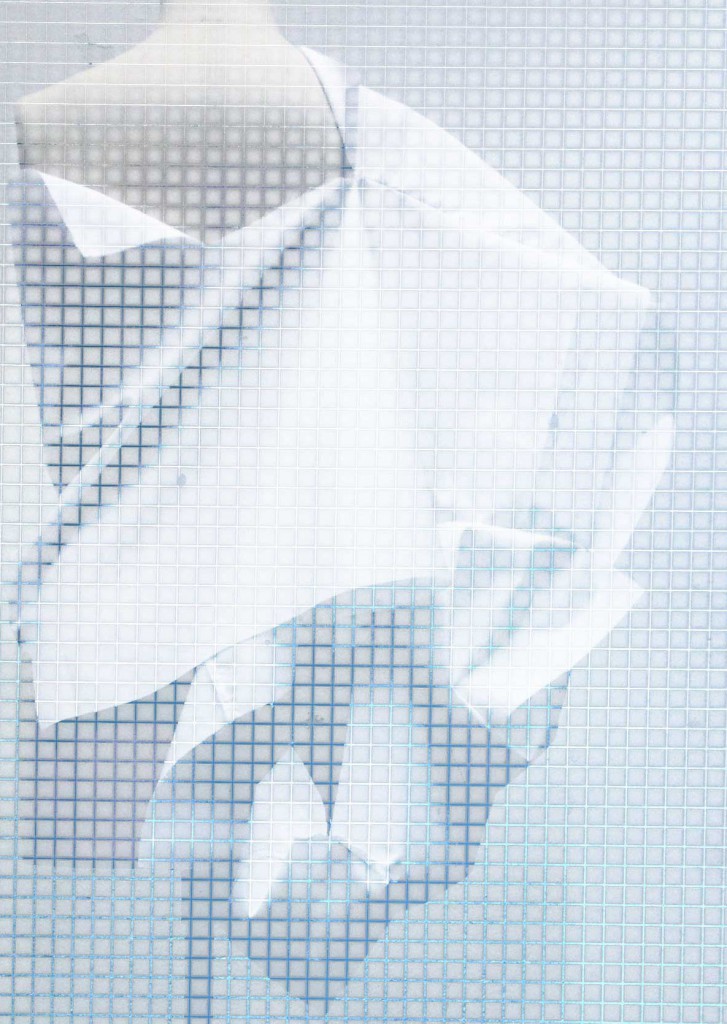
.
›Genealogie der Form‹ // Rundgang 2015
Ich nehme ein Hemd
Ich zerlege diese vertraute Form in ihre Bestandteile
Ich isoliere die einzelnen Komponenten voneinander Ich formuliere Handlungsregeln
Ich bestimme das Werkzeug
Ich gebe all das weiter an andere
Sie setzen die Elemente wieder zusammen
Sie befolgen oder brechen die gegebenen Regeln Sie erschaffen ihre Übersetzung des Gesehenen
Ich nehme die neue Form an
Ich transportiere diese ins Material
Du gibst ihr den Zweck
.

.
Project Proposal (2014)
The beginning
While experiencing the fashion cycle through out all of the steps in sampling and production, a question raised up: What would other people see in the designs I gave them to translate from 2-D in 3-D, if I would reduce my communication to the minimum?
When we create something, we normally communicate everything we know about it. A process of building up always includes numerous people in a specific order. A tight and detailed code is set up throughout the years to guaranty an outcome, as close as possible to the sketch of the designer. But what happens when the communication thread is cut and manipulated? When the translation process of the idea leaves openings? When you mix up the hierarchy of decision making? Randomness made by human hand. The „not-knowing“ as an active tool. Shape created by selected information. The body follows.
Questions to ask, answers to find
Throughout the research process I started to move up and down the layers of my initial idea. Further questions opened up: Who is the designer of the object at the end? How does acceptance and recognition of pieces affect the form? Which clusters and clichés are holding us tight throughout the creation process? How does material, tools and knowledge influence the shaping process? Will a second identical shape ever come out? What value does it have to the person creating it and to the person looking at it?
The process has to be shaped first, not the final product. So the focus lies on the act of composing, to be able to discover the points, which are influencing the direction of the translator.
A constant question interconnected to this project is the definition of authorship, as the creation process will always include minimum one other person. In this, I see a high potential for the composition process. A second mind will help to open up further layers of the shape dozen in the created pieces. Used knowledge and ignorance, while building up a new shape, will fertilize or deform the object. At the end, it will definitely open and restructure the imagination of the common idea. For this, one has to be open up for unpredictable creations. The evaluation of the object itself needs to take place, when the creation process is done. The evaluation of the person to collaborate with, needs to be done beforehand.
